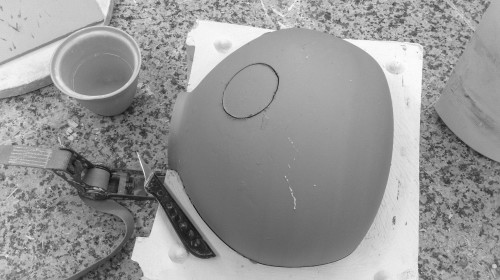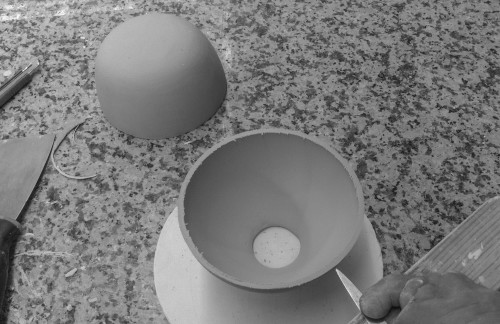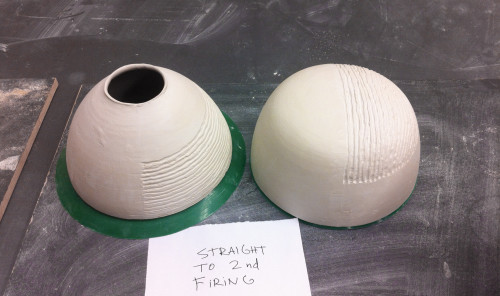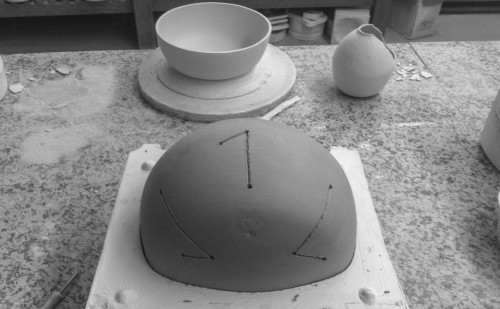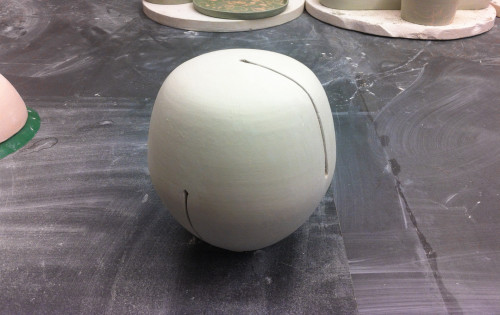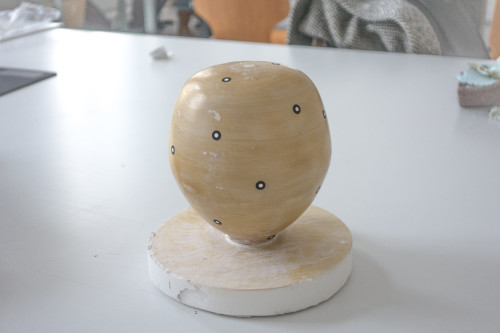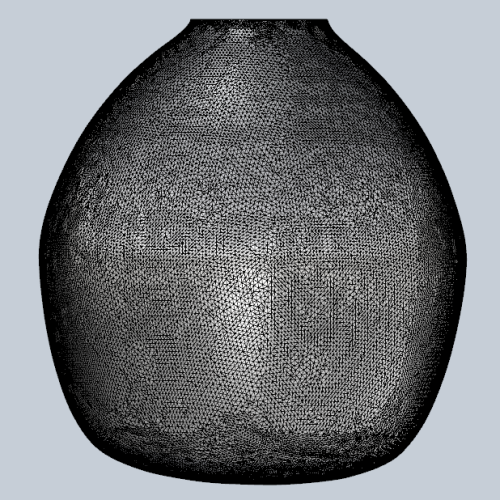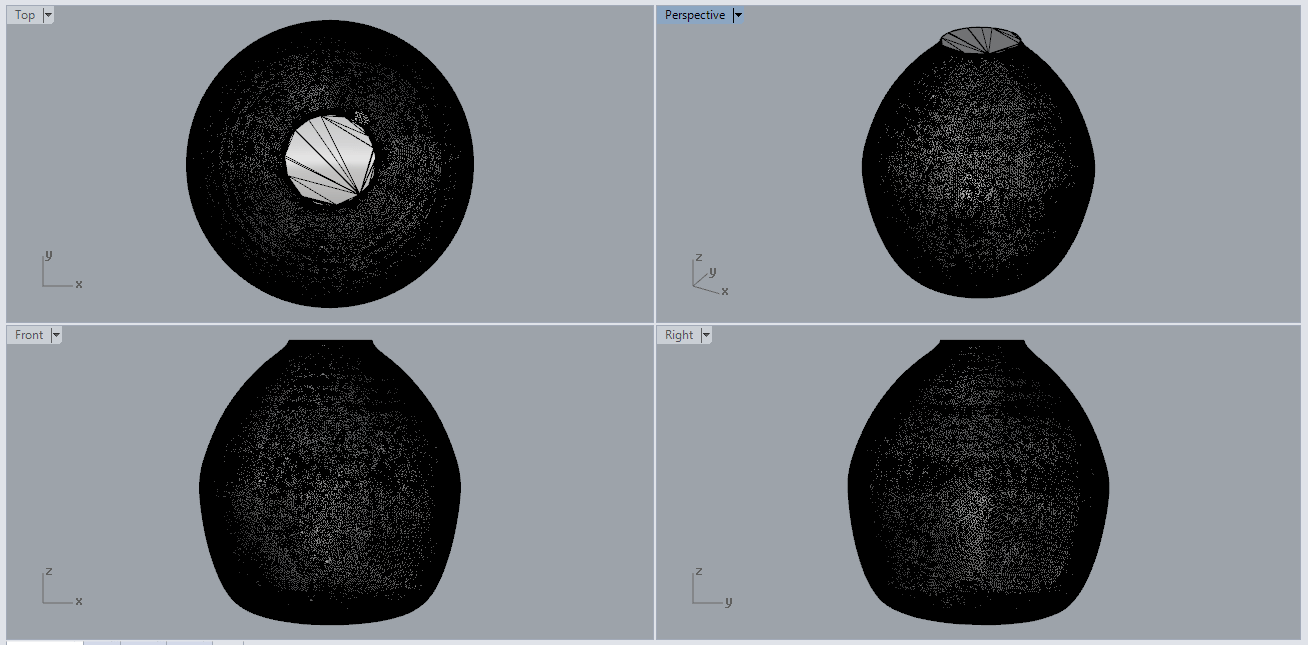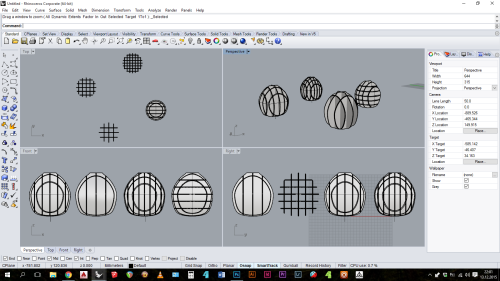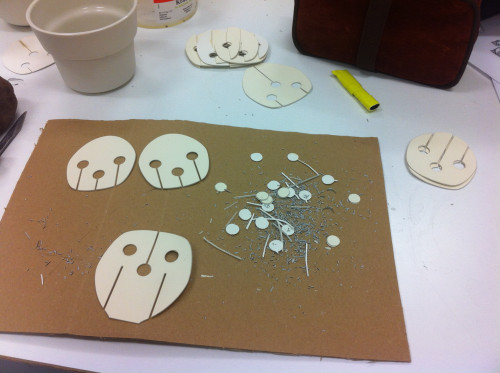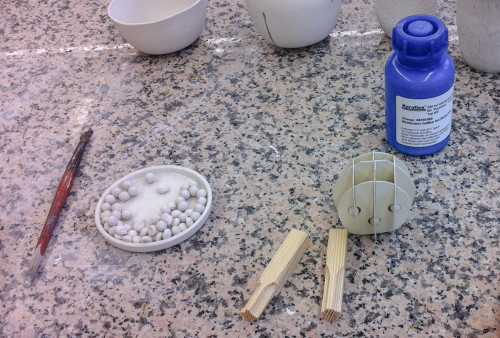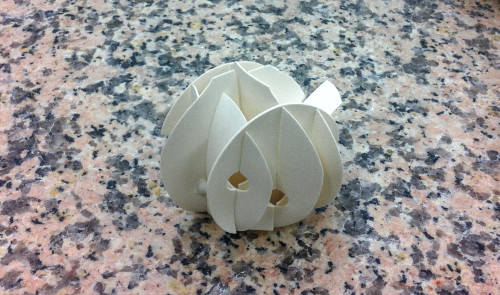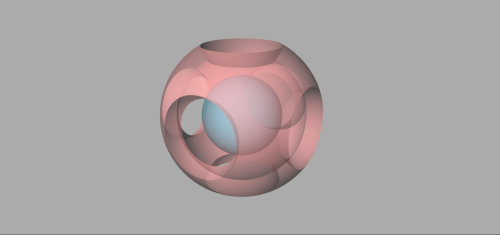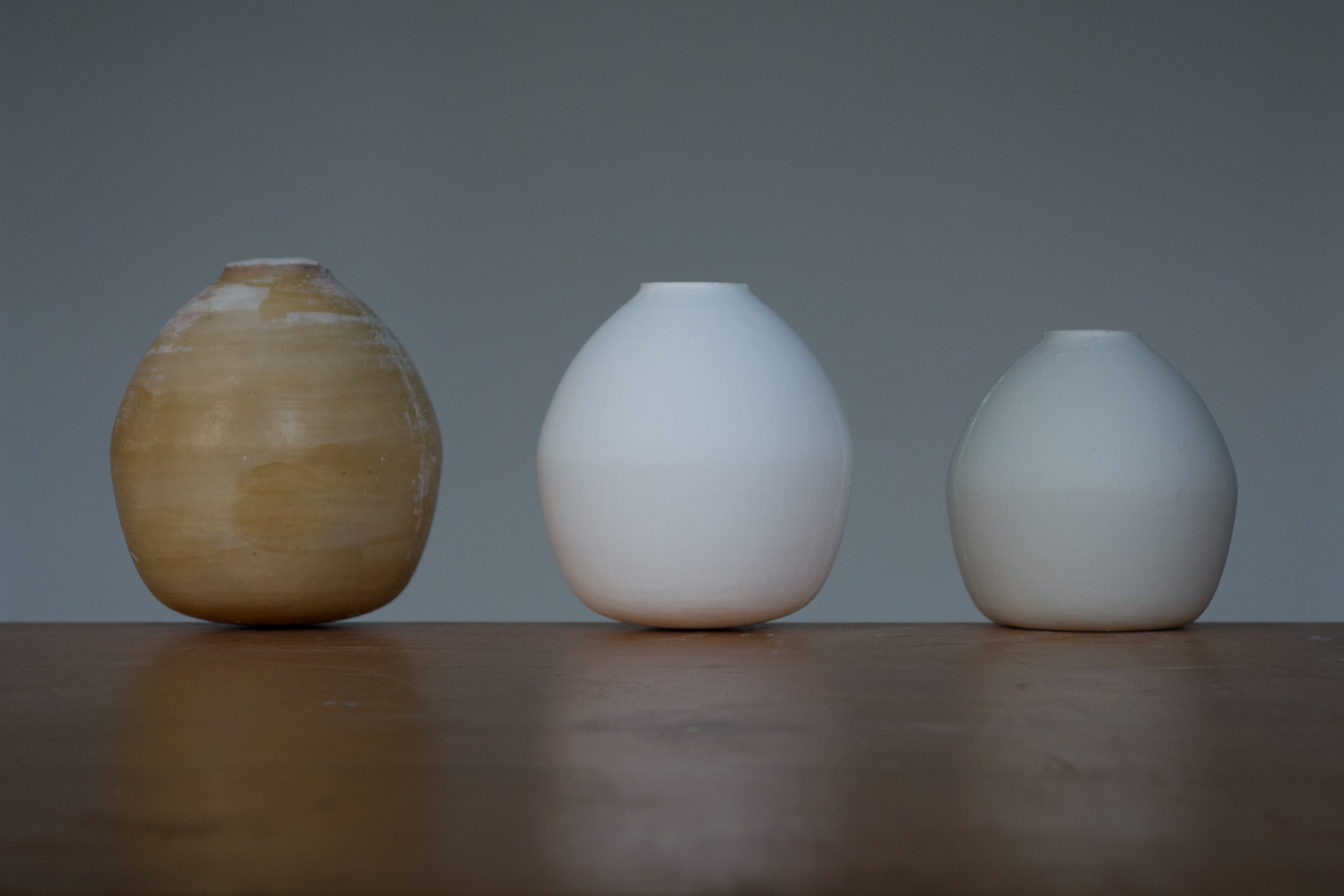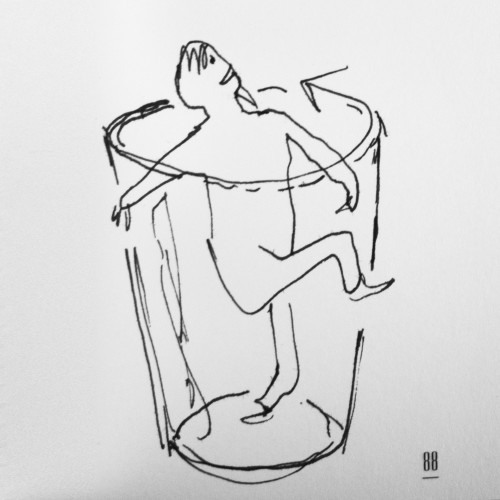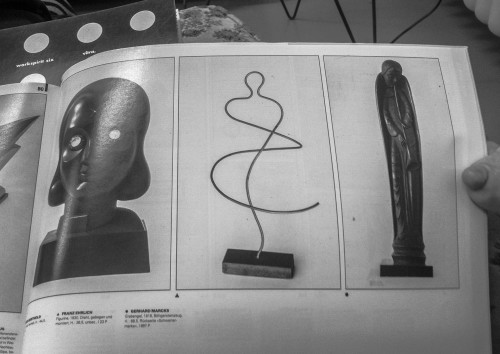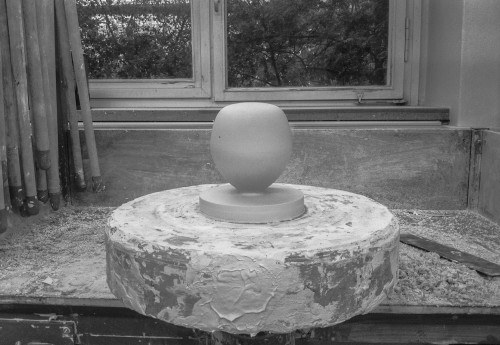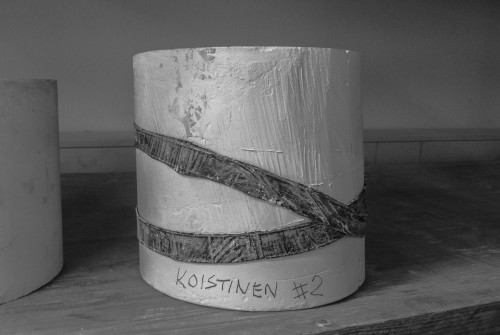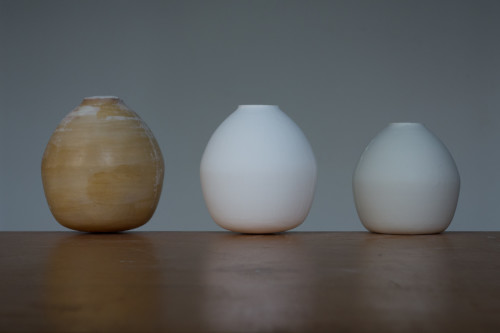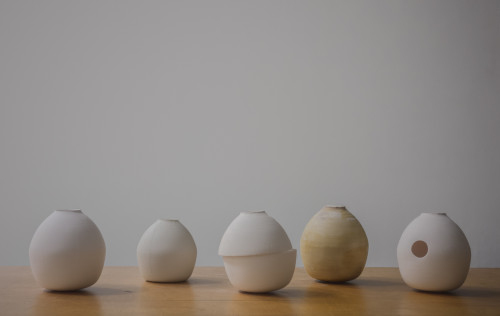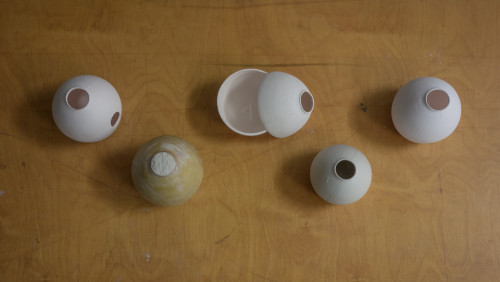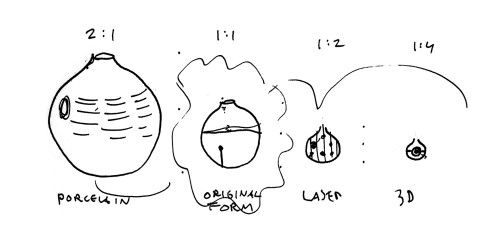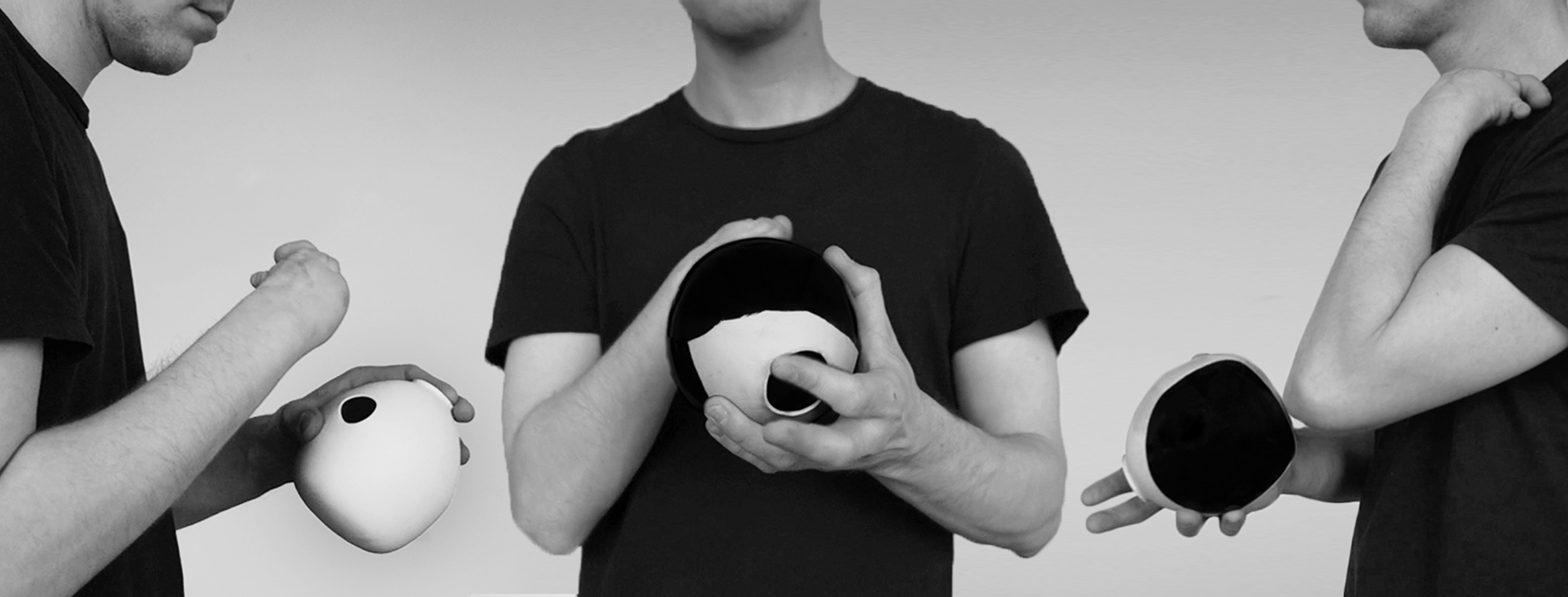
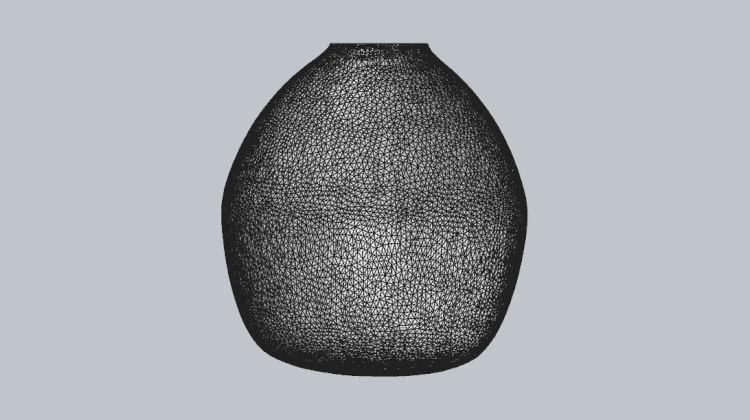
DANCER VASE is a series of kinetic and performative sound objects made out of porcelain. The series consists of experiments based on one mother form inspired by human body. With the experiments I wanted to question how objects relate to our physical properties and how could a vase be made into a musical instrument – from a static container to a dynamic, performative object.
www.markuskoistinen.com
markus.koistinen@gmail.com
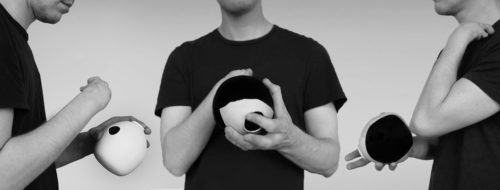
By casting and cutting the DANCER VASE form in various ways I created instruments each with a unique sound.
UDU is made by cutting a hole on the side of the vase. By tapping and covering the holes with fingers one can play melodies within a range of five notes.
https://www.youtube.com/watch?v=xSxB6HMUjhc
THE BELLS were made by cutting the vase in two. The horizontally cut halfs make a bell like sound.
https://www.youtube.com/watch?v=DVV9JdiCFk0
THE TONGUE is made by cutting slits on to the vase. It is played with small balls inside the vase and make a rattling, shaker type of sound.
https://www.youtube.com/watch?v=UUYj2HpAIuI
THE VASE itself can be played by tapping on the hole or on the center of the bottom.
https://www.youtube.com/watch?v=iLXhZdyGyGg
More videos on the DANCER VASE playlist.

